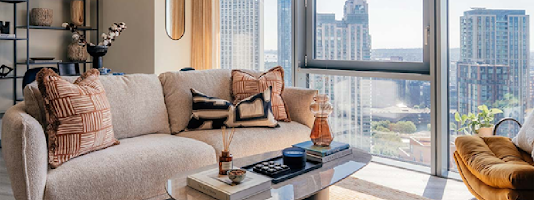Sustainable or green design is a concept that can be defined as the approach to the design of indoor spaces that is environmentally friendly and energy conscious. Are you also thinking about taking a step towards it? Then STYLARC will be your best solution. It is equally crucial to employ sustainable materials in the process of designing any interior space. This article aims to highlight the importance of utilizing green building products to enhance interior areas and explores some of the familiar materials utilized in the modern world.
Reducing Environmental Impact
The main advantage of utilizing sustainability when constructing indoors or furnishing them would, therefore, be that they are environmentally friendly. In general, most green products are bio-based, renewable, reversible, and release fewer greenhouse gases. For instance, bamboo grows very fast and can be harvested many times within a given time period. Recycled metal and upcycled furniture also fit the description of this attribute since they save resources. While plastics and synthetics outgas various VOCs, resulting in poor indoor air quality, sustainable materials do not emit such pollutants.
Enhancing Energy Efficiency
Optimal use of green building materials also allows better heat and cool circulation. For instance, the use of some eco-friendly insulation materials like sheep’s wool, hemp fibre and cellulose assists in the retention of heat or cool air. Likewise, cool paints and reflective glasses enable more natural light as opposed to artificial ones as a result of less reliance on the latter during the day. These materials are used in a way that assists in reducing the amount of carbon emissions of a building. If you are thinking if it will really work or not, then don’t worry the experts of STYLARC will give you a clear idea about that.
Common Sustainable Building Materials
You may think about some options that will help you to get the best result. Here is a preferable list of materials that you can use in your indoor design.
· Bamboo – This type of vegetation has a higher rate of growth than trees, can be replenished quickly and can be used to produce floorings, furniture, wall panelings and others.
· Alternative energy sources – Renewable sources of power instead of using fossil fuel. Recycled metal is long-lasting and user-friendly.
· Natural linoleum – It is made from natural components such as solidified linseed oil, cork dust, tree resins, limestone, and wood flour, which makes natural linoleum a more environmentally friendly floor material.
· Wool insulation - Wool from the sheep can be used as an insulator for climate control and for soundproofing.
Conclusion
The overall quality of the building materials that are used directly impacts the carbon footprint. Therefore, it is very important to use recycled materials that do not harm the environment. Sustainable design materials are also related to the healthy and comfortable level of occupants as well as reducing environmental pressure. Builders are gradually incorporating green materials in their systems, so one should expect indoor spaces to be more sustainable in the future. So you can take a step towards it with STYLARC.




No comments:
Post a Comment